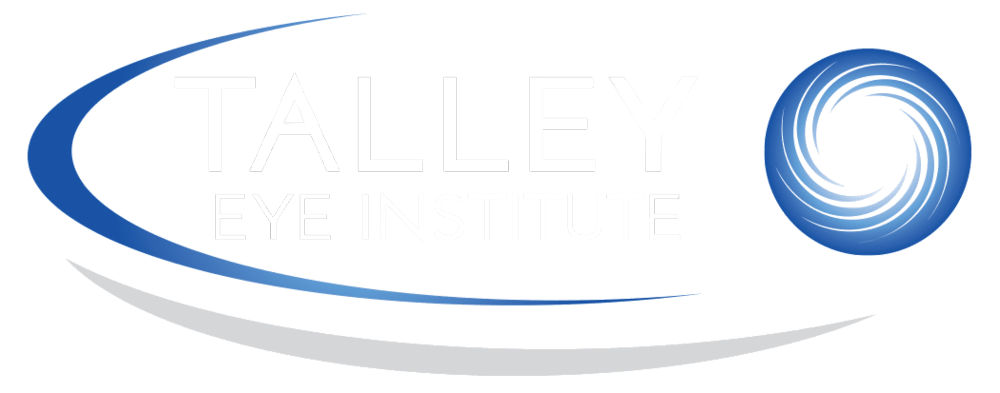YOUR CATARACT EVALUATION AND SURGERY: WHAT TO EXPECT
Let's Get Started
Your first appointment with us is your cataract evaluation. At this appointment, your eyes will be dilated, and a complete and thorough exam will be performed along with several tests that help take measurements specific to your eyes that are necessary in planning surgery. You will not have cataract surgery at this first visit.
Prior to this appointment, we will contact you via email, text, or traditional mail with information and resources to help you understand what's involved with your cataracts and learn more about your lens options. You will also receive a questionnaire that asks about your symptoms and lifestyle. This questionnaire is important in helping your surgeon understand what recommendations to make that best suits your individual needs and preferences. We also recommend that you review our website for additional information regarding cataract surgery.
If you wear contact lenses, you will need to remove them before your appointment (one week for soft contacts and at least four weeks for rigid gas permeable lenses). This allows the cornea to return to its natural shape before important measurements are taken. Be prepared for your evaluation to take approximately two hours (more or less), and your eyes will be dilated so you’ll need a driver to take you home. Once all your tests and measurements are complete, your surgeon will evaluate your cataracts. During your evaluation, it’s important that you discuss all your symptoms and concerns with your doctor. This is the time to ask questions as well. At the end of your discussion, your surgeon will make recommendations for an intraocular lens(IOL), which is the artificial lens that will replace the cataract. It’s important that you fully understand your options at this time, since cataract surgery is usually a once in a lifetime procedure.
Intraocular lens technology has had significant technological advances, and there are several lens options available for cataract surgery. Not everyone will be a candidate for these specialty lenses, since there are some situations that would not allow the lens to work to its full potential, if at all. Your surgeon will discuss any concerns that may prevent you from selecting a specialty lens.
Intraocular Lens Options
The most important thing to understand is that this decision is one that you only get to make once in a lifetime. Careful thought about your lens choices is important during this step of the process.
An IOL is an artificial lens (usually made of clear plastic, silicone, or acrylic) that replaces the eye's natural lens, which has become the cataract and is removed during surgery. These new, artificial lenses help restore clear vision but can also help reduce or even completely eliminate the need for glasses or contacts after surgery. Now, let’s break down the lens options and technology.
- Standard, Monofocal IOL: These lenses provide a single point of focus, either up close or far away, but not both. It does not correct astigmatism. Patients will still require glasses or readers after surgery. The standard lens is the only lens covered by insurance (after applicable copays, deductibles and coinsurance as described in your insurance plan benefits).
- Toric Monofocal IOL: Toric IOLs are similar to the standard monofocal IOL but provide the benefit of correcting astigmatism so patients who have astigmatism correction in their glasses may be able to function without glasses for distance vision, but will require glasses for intermediate and/or near tasks. There is an out-of-pocket expense for this lens in addition to the out-of-pocket payment required by your insurance.
- Multifocal IOL: A multifocal IOL is essentially a trifocal lens that creates three distinct focal points; distance, intermediate, and near ranges. This technology corrects several things at once; cataracts, near or farsightedness and presbyopia thereby helping to reduce or eliminate the need for glasses after cataract surgery. If you have astigmatism, these Multifocal IOLs can correct this condition as well. This technology, while beneficial for correcting the aforementioned visual issues, also has its drawbacks. Due to the technology used to provide three points of focus, multifocal IOLs can cause glares and halos as well as slightly decreased contrast which become noticeable after surgery. For many, these issues slowly decrease over time as the brain becomes used to this new visual input by a process called neuroadaptation. This lens technology is considered out-of-pocket and is not covered by insurance.
- Extended Depth of Focus (EDOF) IOL: Much like the multifocal IOL, the extended depth of focus IOL corrects nearsightedness (myopia), farsightedness (hyperopia) and astigmatism. The technology creates an elongated field of focus which allows for three points of focus, distance, intermediate and functional near vision. The difference between the multifocal and EDOF is that the reading range is slightly more limited, but the EDOF IOLs have reduced risk for nighttime side effects like glares and halo as well as have slightly improved contrast compared to the multifocal IOL. This lens also has out of pocket expense.
Not Everyone is a Candidate for Advanced IOLs
While it can certainly be exciting to consider the possibility of reduced or no dependence on glasses after cataract surgery, it’s important to understand that there are some individuals who may not qualify for specialty IOLs. The overall health of the eye needs to be good, with no ocular disease or retinal conditions. Having a pre-existing ocular condition prevents the IOL’s technology from working to its full potential, if at all. Essentially, this would be a waste of money for the patient, and they would likely still need glasses to see their best. Your surgeon will have these discussions with you during your evaluation so that you know which lens you qualify for.
Let’s talk range
When your surgeon discusses your IOL options, you’ll hear the terms distance, intermediate, and near. While lens technology can never guarantee you’ll see everything perfectly with an upgraded lens, generally, the common tasks patients ask about apply here:
- Distance: television (small tickers may be problematic), dashboard and beyond (driving)
- Intermediate: computer, menu, alarm clock
- Near: reading, cell phone, or close-up detail work (pill bottles, threading a needle)
It’s worth mentioning again that
no surgeon can guarantee a specialty IOL will give you perfect vision at all ranges and for all tasks. It’s reasonable to expect you may need to grab a pair of readers for very fine, detailed work.
Scheduling Your Procedure, Preparing for Surgery
Once your evaluation is complete, you will visit our surgery scheduling department. Our team will walk you through what to expect before, during, and after surgery as well as provide you with detailed handouts for each step including the use of medications. You will be offered options for available dates to have your procedure. Our staff will also assist in scheduling post-operative follow-up appointments either with our office, or your referring optometrist.
While our surgeons operate at the surgery center or hospital, these facilities are owned and operated independently. Closer to your scheduled surgery date you will also get a call from their nurses to go over special pre-operative instructions.
What to Expect with Surgery and After
Your cataract surgery will take 10-15 minutes, but you will be at the surgery center or hospital for a few hours. You will have IV sedation which will make you groggy but you will still be conscious and breathing on your own (also referred to as “twilight” sedation). Once complete, you will be in a recovery area until you are released to go home. Your eye will not be patched but vision that day will be blurry. Blurry vision is normal for several days for some patients as each person heals differently. Mild discomfort is normal but there should not be any severe pain. Due to the use of anesthesia, you should not operate a vehicle or make any major decisions that day. Activity following surgery will only be slightly modified. You will want to avoid submerging your head in standing water (bath, pools), any excessive lifting (more than 20 pounds), bending, stooping, or straining for about one week, or as directed by your surgeon. You will also want to avoid any excessive activity until you’re fully released, but normal daily activity is generally fine. Most people go back to work in a day or two, depending on their line of work. Keeping your routine post-operative appointments is critical during your healing period.
Our surgeons and staff will review all the risks and benefits of surgery.
Every surgery does have risks, but we work hard to minimize any chance of complication. An important part of that is helping patients fully understand each element leading up to and following surgery to ensure all protocols are followed as directed.
FAQ & Glossary of Terms
What is a cataract?
A
cataract is a clouding of the eye’s natural lens. Cataracts can take years to develop, but eventually start to cause symptoms like cloudy vision, difficulty reading, glares/halos around lights, difficulty driving at night, decreased color contrast, just to name a few. Once your symptoms impact your life, it’s time to consider surgery. Cataract surgery is a common surgical procedure that removes your cloudy natural lens and replaces it with an artificial lens.
With cataract surgery, the cloudy, hardened lens is extracted and a new, artificial lens is implanted. After cataract surgery it’s not uncommon to develop a new problem with the same symptoms as cataracts. Often called a “secondary cataract”, posterior capsule opacity (PCO) occurs when scar, or haze develops on the capsular bag (which holds your new lens in place). There is no way to predict who may be affected by PCO, but there are some risk factors that can contribute, including: age at the time of cataract surgery, previous retinal or glaucoma surgery, or a rare eye condition called uveitis. There is no way to prevent PCO but the good news is that treatment is much easier than your initial cataract surgery.
Learn more here.
Does insurance cover cataract surgery?
As long as your doctor determines that it’s medically necessary (you have symptoms and exam findings support the recommendation for surgery), your insurance or Medicare should cover your surgery. However, your plan may require out-of-pocket expenses such as copays, deductibles, and co-insurance. Medicare and insurance will not cover the cost of a premium IOL, only the standard monofocal is considered a covered expense. If you select a premium IOL, your insurance copays, deductibles, and co-insurance will apply in addition to the cost of the upgraded lens. You should expect bills from three different entities with your surgery: the doctor's office (professional fee), the surgery center or hospital (facility fee), and the anesthesiologist.
Does insurance cover premium lenses (IOLs)?
No. There is never any plan (private or commercial) that covers an upgraded IOL. Premium IOLs are always considered out-of-pocket, and this expense is in addition to the cataract surgery out-of-pocket expenses. You can, however, utilize FSA/HSA plans to help offset or cover the expense. Talley Eye Institute also offers up to two years interest-free financing plans that can make your IOL selection an affordable option (if qualified).
How soon can I have surgery on my other eye?
Typically, you may expect one to two weeks between your procedures, but this can vary based on surgeon availability.
Talley Eye Institute Locations
- Talley Eye Institute Main Office 6149 E Columbia St, Evansville, IN 47715, United States
- Valley Surgery Center 6201 E Columbia St, Evansville, IN 47715, United States
- Talley Eye Institute Jasper 200 St Charles St, Jasper, IN 47546, United States
- Talley Eye Institute Huntingburg 303 E 13th St, Huntingburg, IN 47542, United States
- Talley Eye Institute Vincennes 328 N 2nd St, Vincennes, IN 47591, United States
- Talley Eye Institute Carmi 62821, Carmi, IL, United States
- Talley Eye Institute Fairfield 101 E Delaware St, Fairfield, IL 62837, United States
- Talley Eye Institute Harrisburg 960 S Commercial St, Harrisburg, IL 62946, United States
- Talley Eye Institute Marion 8341 Express Dr, Marion, IL 62959, United States



